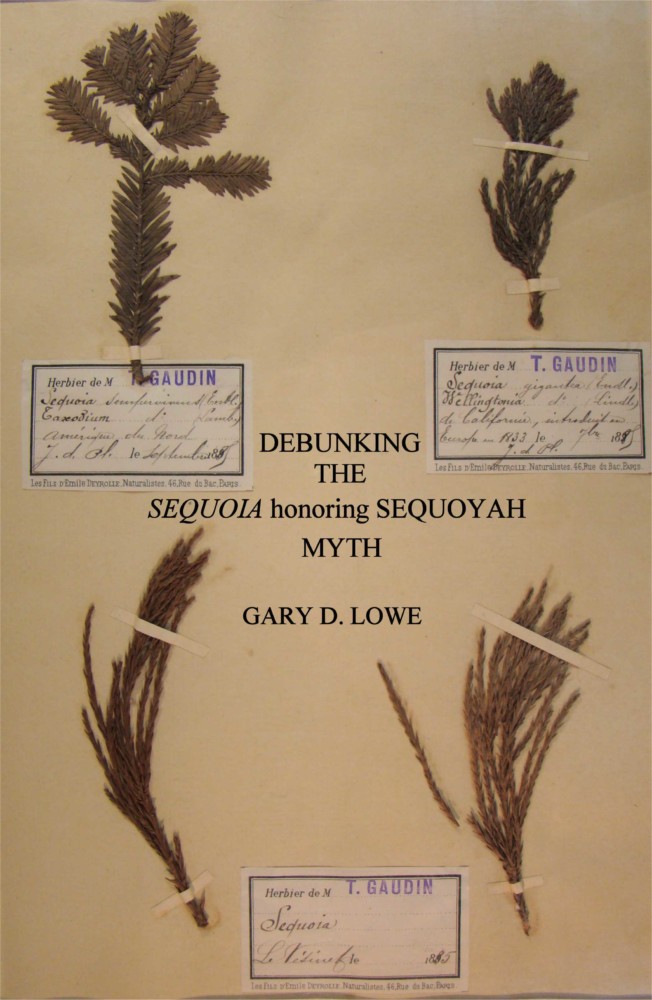

Austrian botanist/philologist Stephen L. Endlicher seldom wrote how he derived the names of the 251 genera that he named, including the genus Sequoia that he named in 1847 after a seventeen year career as a fundamentally Linnaean systematic botanist. In 1856, inspired by the “Great Tree of California”, the giant sequoia, uncertain wishful thinking began the idea that, because of his philological interests, Endlicher named the genus Sequoia to honor Sequoyah, the inventor of the Cherokee syllabary. The Sequoia honoring Sequoyah hypothesis continued as the dominate thought through the 20th century. In the third quarter of the 19th century, botanists proposed that the name Sequoia was based on the genus following in some historic sequence, deriving the name from the Latin ‘sequi or sequor,’ meaning to follow. Endlicher’s botanical practices were in the realm of Naturphilosophie; searching for the “code of nature’s numerical order.” Early in the 21st century Endlicher’s sequence was identified in his classification of the coast redwood among genera following in a recursive numerical sequence; 1, 3, 4, 6, 7, based on the median number of seeds per cone scale. However, in the second decade of the 21st century a detailed argument buttressing the Sequoia honoring Sequoyah hypothesis was published based on a wrested chain of counterfactual arguments that are here heuristically falsified. Parsimoniously, Endlicher’s Linnaean botanical protocols and his knowledge of the ancient Latin of manuscript texts, shown in his coauthored 1837 book Analecta Grammatica, allowed him to readily use as a prefix “sequo,” the early root of the Latin verb “sequor” by dropping the added “r” and then adding the Latin suffix “ia” to yield the new word Sequoia. The Department of Special Collections at the Stanford University Libraries welcomes the opportunity to collaborate with Gary Lowe on the publication of this work in the history of botany: the naming of two important native California trees, the coast redwood and the giant sequoia.